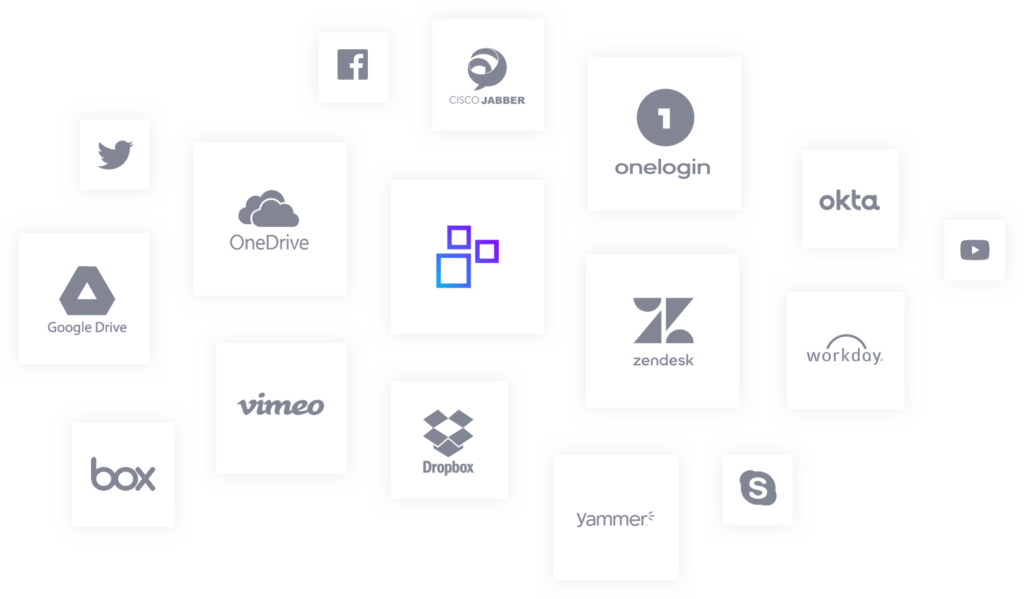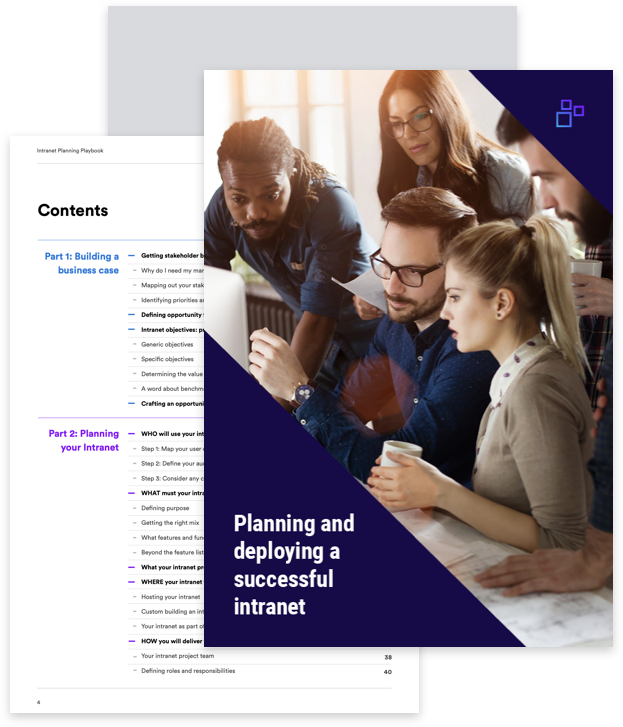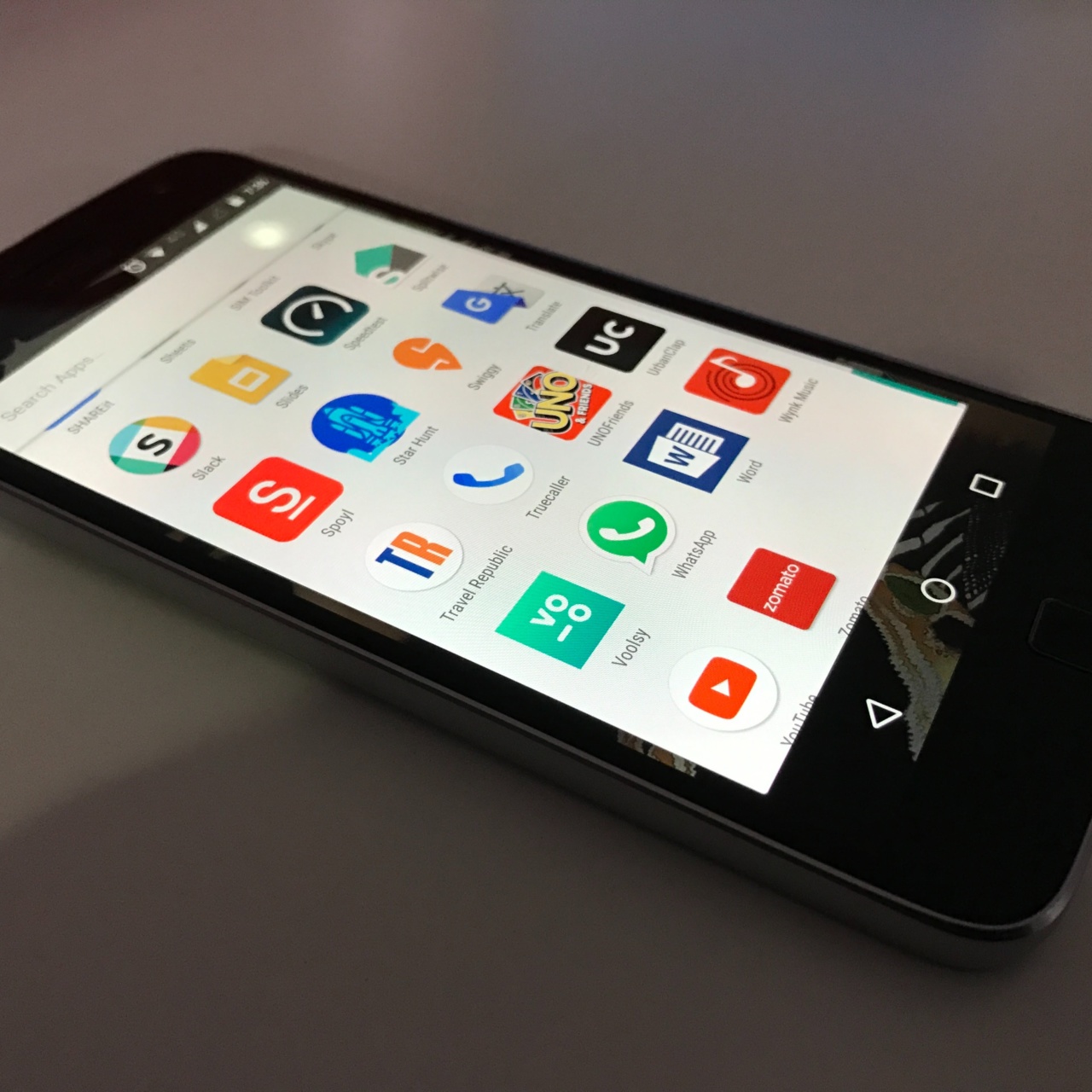Creating your presentation, designing a social media post, submitting your expenses: there’s an app for that.
Today’s digital workplaces are inundated by tools designed to support how we work, but the intranet shouldn’t be ‘just another on the list.’ Here’s why it deserves a unique spot in your lineup.
Our organizations now have tailored digital toolkits designed to answer just about every employee – or business – need.
We’ve long evolved past the days of Microsoft ’97 as the core foundation of our workplace productivity needs: estimates now put the number of applications in the average enterprise at anything from 129 (Okta Inc) to 464 (Cloud Security Alliance). Some larger organizations are battling as many as 10,000 different tools, applications, and digital services.
While some may still juggle a few balls, most apps are designed to answer a bespoke, niche business need or challenge: whether that’s your HR platform, learning management system, or Microsoft Teams for in-company communication.
The intranet is often historically designated as the ‘company news platform,’ or perhaps the ‘place to find HR policies’: risking its dismissal as just ‘another on the list.’
The truth is, it’s value and role go far beyond a single benefit: it’s a tool deserving of a unique place in your digital workplace. There’s a real business case for internal communicators and management alike for prioritizing the intranet and investing in making it more than just one of many.
Divided attention: the battle of digital workplace apps
The sheer volume and scale of today’s digital workplaces is eye-watering.

This presents an undeniable challenge for our employees: app-hopping from one tool to the next, with each individual application there to serve a defined purpose on our work checklist.
Book paid time off on Workday – check. Give feedback on the quarterly report on Microsoft Word – check. Book a meeting in the diary on Outlook – check.
We’re subconsciously scheduling in pockets of our time for each of these different applications while fielding the multitude of various notifications, alerts, reminders, or pop-ups they push to us. This is before we even factor in the attention-stealers residing on our cellphones or personal applications.

As a result, multi-tasking and divided or alternating attention is now the norm, both in work and in our day-to-day lives. We’re continually switching focus, even if those switches are infinitesimally small and multiple times a second.
Many internal and external factors shape the time we can – and choose – to dedicate to each individual application or task. That could be preference, a defined business need or deadline, the ease of use/user experience offered by the app, or perhaps the presence within it (for example, we may spend time within the company instant messaging tool, even though we hate how it works, simply because all our colleagues are using it.)
It may be the perceived value we get from it: do we get new or inspiring content from it, such as Instagram? Does it help instill a sense of connection with others, such as Facebook?
When introducing an intranet to employees, we’re effectively adding to this list of potential distractions and digital business noise.
Staff may download or bookmark it as another digital destination to schedule time for when needed, often assigning a mental note against it – depending on what’s stuck as a USP during the launch process. For example, I go to ZenDesk when I need to raise an IT support ticket; I go to the intranet to read the company updates.
However, if we can build its value proposition for employees beyond a task-led purpose, it will deliver returns across many business areas: including some we may not have initially expected.
Connecting with employees: beyond work
Naturally, there are times when it is essential we communicate effectively with our staff and hold their attention: whether that’s to deliver critical updates, roll out compliance or policies, or train up on new procedures, services, or products. We also need to ensure we’re safeguarding employee time and retaining their focus to perform their roles effectively. Their time is our money, after all.
However, the business case for competing for staff time and cutting through that digital noise goes far beyond this.

The key lies in connection. The more touchpoints our employees have with their organization – and the greater the sense of connection those touchpoints create – the more significant the impact in terms of their loyalty and attachment to the brand, culture, and company overall.
The experience we shape for our employees is now a significant differentiator that can impact our ability to both attract and retain employees.
Every interaction with a colleague, a line manager, or with the organization as a whole, is an opportunity to build on that bond: in the same way that leading consumer brands create affinity with audiences through multiple small engagements as part of the buying cycle. Each is a small piece of a much bigger picture.
In the continued war for talent, that experience we shape for our employees is now a significant differentiator that can impact our ability to both attract and retain employees.
It can impact business KPIs, ranging from improved productivity and output to higher engagement, brand advocacy, customer service, etc. Today’s most successful organizations nurture a sense of belonging, camaraderie, purpose, and personal satisfaction in their employees: making work more than just a job.

However, today’s organizations are increasingly dispersed, remote, digitalized. Social and in-person interactions are increasingly being replaced by virtual ones: particularly in the wake of the recent coronavirus pandemic, where workforces made the move en-masse to remote working.
The question is, how do we nurture this sense of connection among employees – particularly among hard-to-reach, remote, or dispersed staff who don’t have the benefit of experiencing the culture or connection created by physical office spaces?
The answer: through a virtual space dedicated to nurturing our culture, internal brand, personable connections, sense of belonging, and purpose. Our intranets.
The intranet: much more than an app
Unlike most tools in your digital kit, the intranet has a unique value-add: it can play a critical role in shaping the employee experience. This particular superpower makes it worthy of the top spot and, arguably, a priority when it comes to choosing where to place investment in pulling employee time.
Where other digital workplace tools are typically designed to serve a defined end goal or purpose, the intranet is the only purpose-developed platform that seeks to answer the more intangible elements of the overall employee experience.
The intranet has a unique value-add: it can play a critical role in shaping the employee experience.
It does so in several ways:
- Connection to the organization: how do your employees understand who you are and what you stand for as a business? Through leadership updates, company news, celebrating success or achievements, recognition, and more.
Internal communication is now increasingly recognized as a critical element for success in an organization, providing staff with a sense of purpose and understanding of their place within the organization and its bigger, long-term goals. The intranet is often the go-to central point for employees to tap into their organization, particularly if they operate on the front lines or away from HQ.

- Nurture a virtual culture: it may be the buzzword of the moment, but it’s for good reason. A company’s culture is a defining factor in employee retention, happiness, and overall job satisfaction.
An intranet is a virtual social space that enables organizations to nurture those values and behaviors that reflect their culture and connect employees behind a common purpose or goal. It also allows your entire workforce to share experiences, recognize teams or employees, and highlight those elements of your organization that go ‘beyond the paycheck’ such as CSR, diversity and inclusion, or sub-communities (company football team or running club, anyone?)
By providing an empathic space that celebrates employees not only as company assets but as individuals with their own interests, passions, emotions, families, and more, you’ll nurture a more connected, inclusive culture.

- Connection to peers: As human beings, we need to build relationships with others. However, many of our colleagues and coworkers are being reduced to a faceless email address or a tiny avatar in today’s digitally-dominated workplaces.
While communication tools are sufficient for team or small group interactions, they do little to break down barriers between those who don’t regularly interact. An intranet connects colleagues across distance, time zone, or role, with rich profiles and social interactions putting a real ‘face to the name.’ Spotlights, recognition, employee-generated content such as blogs, forums, and more, all take this sense of connection to the next level.

- Giving staff a voice: empowering employees to speak out or engage in two-way conversations with your organization is a powerful tool for shaping their overall experience.
An intranet offers a safe, collaborative space for innovation and ideation, feedback, sharing experiences or insight, or contribute in ways they might not feel able in person. In-built tools including forums, pulse surveys, polls, or the simple act of commenting and contributing all create an open, creative, engaged space for employees. - Transforming the digital employee experience: we’ve already noted that today’s typical technology stack is noisy and occasionally overwhelming.
Today’s intranet solutions serve as a window to your digital workplace: bringing together those dispersed tools, apps, and different knowledge assets with an employee-focused interface that helps reduce noise and create a user-friendly, intuitive, easy experience.
It’s a major differentiator in today’s technology-driven recruitment market, where workplace tech now ranks among the top requirements on the candidate wishlist.
Using your intranet to help build a sense of connection
Realistically, many communicators know that their people will initially visit the intranet on a ‘need to know’ basis: seeking out information for a specific need or purpose. Usage data from our own Interact customers shows that connected employees will visit their intranet an average of three times a day for just 3.2mins each time.
However, we now understand that it’s not necessarily about the length of time spent engaging, but the quality of the interaction. In a similar way to social media or screen time, the sum of our digital interactions and the collective experience those create is what sets platforms – or brands – apart. The intranet may have a tough task when we consider the sheer volume of competition, but it definitely has something unique to bring to the table.
There’s a reason why social media platforms are so powerful at stealing, capturing, and retaining our attention: they prioritize the human need for connection, or ‘limbic resonance,’ in the experiences they create. This is the value an intranet offers that no other business application or platform can.
By understanding the importance of that empathetic system that drives our sense of connection, organizations and internal communicators can shape intranet experiences that tap into the very psychology of what makes us tick. Our intranets will then draw users in beyond a simple task: and engage them on a whole other level.


